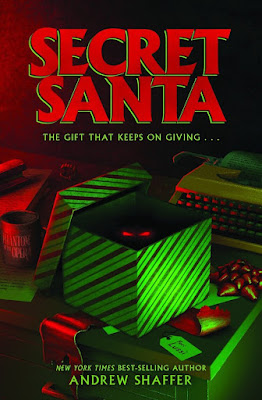Whether you enjoy men's
action-adventure, adult westerns, comics, mysteries, vigilante sagas,
or gothic romance, there's something for everyone when it comes to
author Jon Messmann (1920-2004). We have covered so many of his books
and titles thanks to publishers like Cutting Edge Books reprinting
his work for modern readers. Hopefully, today's primer will shine a
light on his life and literary work.
Jon Messmann was born in 1920. His
parents forced him to play violin and some sources stated he really
disliked playing music and preferred writing. In 1940, he began
writing for the up-and-coming comic industry, a period known as the
Golden Age of Comic Books. His first gig was for Fawcett Comics, an
early, successful comic book publisher of that era. His co-workers
were a dream-team of comic book icons such as Joe Simon, Jack Kirby,
and Chic Stone. Messmann wrote for a decade on titles like Captain
Marvel Jr., Human Torch, Sub-Mariner, Gabby Hayes, Don Winslow of the
Navy, Tex Ritter, and Nyoka: The Jungle Girl.
In 1950, Messmann, co-created Carousel,
an 8-page tabloid comics section in the Pittsburg Courier. This
featured many of Messmann's comic ideas like secret agents,
historical romance, sea adventure, private-eyes, jungle girls and
even fairy tales. Carousel lasted five years and was distributed by
New York's Smith-Mann Syndicate. But, Messmann wanted to get into
writing full-length, paperback originals.

Engel, pleased with Messmann’s
production, paired him with another Killmaster author named George
Snyder for a series called Hot Line in 1970. The series lasted only
three installments with Messmann only contributing to the debut, Our
Spacecraft is Missing!. Again, this allowed Messmann to develop a
modern secret-agent, in this case a President’s Man type of hero
named Fowler.
Also in 1970, while writing Killmaster
novels Messman wrote two books starring a vagabond hero named Logan.
They were inspired by John D. MacDonald’s successful character
Travis McGee. The books are Logan and Killers at Sea and were
authored under the pseudonym Alan Joseph. Both books have been
reprinted as new editions under Messmann's name. You can obtain them
HERE.
Just like Gil Brewer, Dean R. Koontz,
Hillary Waugh, and Gardner F. Fox, Jon Messmann also authored gothic
romance paperbacks. The pseudonyms he used for these novels was
Claudette Nicole and Claud Nicole.
After Mack Bolan's saga was unveiled in
the hit series The Executioner in the late 1960s and early 70s,
publishers began searching for vigilante fiction. In 1973, Signet
began publishing a vigilante series called The Revenger, written by
Jon Messmann. He crafted these novels through 1975 while also
creating and writing another character, Jefferson Boone: Handyman.
The sexual escapades of The Revenger's Ben Martin, Jefferson Boone:
Handyman, and the Nick Carter series before that, led Messmann to what
would ultimately become his meal ticket – Skye Fargo.

Messmann also created the short-lived
Canyon 'O Grady western series in 1989 and authored three
installments. It was rumored that Messmann had never been to the
western regions of the U.S., instead writing every Trailsman and
Canyon 'O Grady novel from the comfort of his Manhattan apartment.
Messmann even dipped his typewriter in
the romance waters. Using the pseudonym Pamela Windsor, he wrote
three romance novels for Jove from 1977 through 1980. He also
authored a horror novel called The Deadly Deep in 1976 for New
American Library, and thrillers like Phone Call for Signet in 1979,
Jogger's Moon in 1980 for Penguin, and the western The Last Snow in
1989 for Random House. He also authored the stand-alone crime-fiction
mystery novel A Bullet for the Bride in 1972 for Pyramid.
Jon Messmann died in 2004 at the age of
84 in a New York nursing home. His books are widely circulated and
can often be found in just about any used bookstore across America.
The fact that fans like myself are still discussing his literature is
a true testament of his storytelling talent. Get many of his books and titles right HERE.












.jpg)




